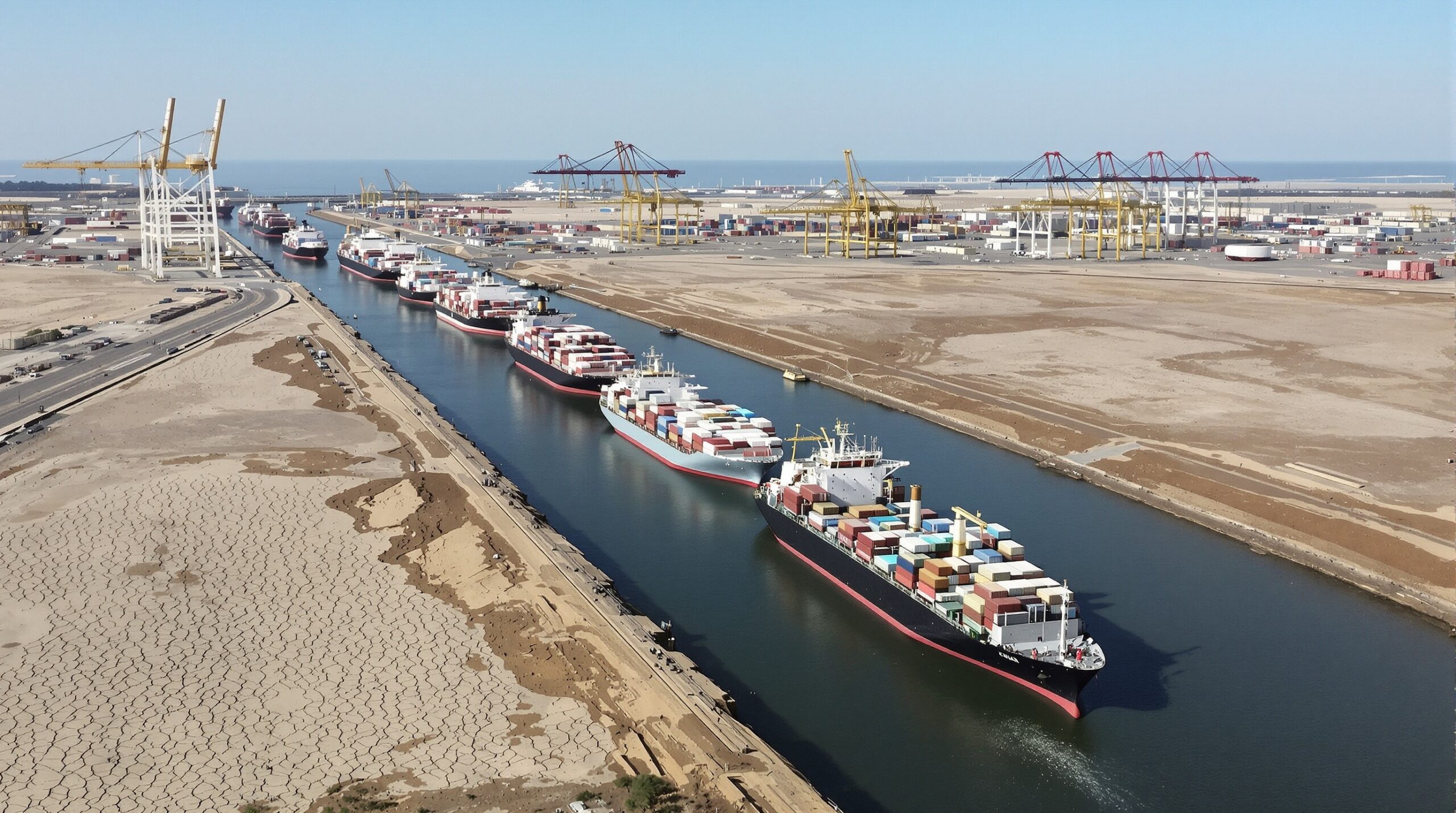Global shipping routes face severe disruptions as drought conditions hamper canal operations. Major arteries, such as the Panama Canal and the Suez Canal, are seeing reduced water levels, limiting the number of ships that can pass. These restrictions force vessels to seek alternative, longer routes and result in higher delivery costs for businesses and consumers worldwide. The shipping industry is grappling with the compounded challenges of schedule delays, increased fuel use, and rising insurance premiums.
The Importance of Major Shipping Canals
The Panama Canal and Suez Canal are vital shortcuts for global trade. The Panama Canal links the Atlantic and Pacific Oceans, saving ships up to 8,000 miles by avoiding the journey around South America. The Suez Canal connects the Mediterranean Sea to the Red Sea, making movement between Europe and Asia far more efficient. Both canals handle billions of dollars in goods each year. When these canals face obstacles, the ripple effects impact supply chains and economies worldwide.
Canal Drought: Causes and Consequences
Canals rely on a stable supply of freshwater to operate their locks. Prolonged periods without significant rainfall lead to depleted reservoirs. The Panama Canal, for instance, depends on tropical rainfall to fill Gatun Lake, its primary water source. Continued drought has forced officials to impose daily transit limits, restrict vessel draft, and prioritize certain cargo over others. This situation creates bottlenecks and delays cargo shipments.
Droughts are partly driven by climate change, which alters rainfall patterns and accelerates evaporation. Increased agricultural and urban usage of freshwater also drains canal reservoirs. As water levels drop, ships must carry lighter loads or wait several days for their turn to cross. Both the Suez and Panama Canals have experienced record lows in water levels during 2023 and 2024.
How Traffic Restrictions Affect Shipping Schedules
Shipping companies count on predictable canal operations. Current limits in the Panama Canal allow fewer than 32 vessels per day, down from an average of 36 to 38. Vessels sometimes queue up for over a week before they can navigate the canal. These waiting times lead to cascading delays for goods, from consumer electronics to agricultural exports. Perishable items are stranded longer, risking spoilage and further economic loss.
Some shipping lines pay higher fees to jump the queue. Others divert their ships entirely to different routes. For example, several carriers now send container ships from Asia to the US East Coast via the Cape of Good Hope, adding weeks to travel times.
The Impact on Delivery Costs and Global Supply Chains
Rerouting ships increases fuel consumption and labor costs. Longer voyages mean vessels are at sea for more days, with crews requiring overtime pay and more onboard provisions. Insurance premiums also rise, as ships face higher risks related to piracy or mechanical failures during extended journeys. These added costs are ultimately passed on to businesses and consumers through higher prices.
Retailers may face stock shortages, especially during high-demand seasons such as holidays. Manufacturers worry about just-in-time inventory models, which depend on punctual deliveries. The auto industry, electronics producers, and food distributors are especially vulnerable to canal disruptions. Delays and higher shipping costs can force companies to adjust their pricing, impacting shoppers around the globe.
Global Trade Volume and the Scope of Disruption
The Panama Canal typically sees more than $270 billion of goods moved through its locks each year. The Suez Canal handles about 12% of all global trade by volume. When either canal reduces capacity, it affects nearly every region, including North America, Europe, Asia, and South America. Routes supplying energy products, consumer goods, and foodstuffs are all subject to disruption when canal traffic slows.
Shipping Alternatives and Their Drawbacks
Some shipping lines choose to bypass canals by rounding the Cape of Good Hope or Cape Horn, options which add thousands of miles to trips. These routes are less protected from storms and piracy, sometimes resulting in insurance surcharges. Air freight is not a typical alternative for bulky or heavy goods due to the expense. Rail and truck transport can only partially substitute for disrupted shipping lanes and cannot handle bulk commodities efficiently. Solutions remain limited and costly for long-haul cargo.
Efforts to Mitigate Canal Drought Effects
Authorities managing the Panama Canal have invested in water-saving basins and are exploring alternate water sources from nearby rivers. However, these projects take years to plan and implement. The Suez Canal has slightly more stable water supply, but neither canal is immune to climate impacts. Industry organizations urge governments and shipping companies to invest in infrastructure modernization and climate adaptation strategies. Despite these measures, short-term obstacles remain challenging given the scope of reduced canal capacity.
Future Outlook for Shipping and Global Commerce
Experts warn of ongoing canal disruptions as unpredictable weather continues. Climate models suggest that droughts could become more frequent and severe, especially in Central America. The shipping industry may need to adjust long-term logistics plans to account for less reliable canal passage. Ports and logistics hubs are also preparing for waves of rerouted vessels and increased storage needs.
Some companies diversify their sourcing and production locations to reduce reliance on single shipping routes. However, global economic integration means that disruptions will remain widespread without systemic changes. Investment in more resilient infrastructure and improved technology remains essential. Transitioning to eco-friendlier ships could help offset some environmental impacts from longer voyages.
Conclusion
Droughts in major shipping canals underline the fragility of global supply chains. Restricted canal traffic amplifies delivery costs, causes delays, and pressures world trade. Shipping companies, governments, and customers all bear these consequences. As climate impacts intensify, proactive solutions are crucial, but short-term disruptions will persist. Only through coordinated adaptation and investment can the shipping sector hope to address these growing challenges over the coming years.

